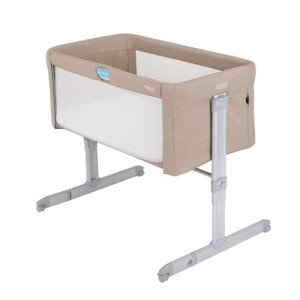25 Amazing Facts About Baby Cots
The Essential Guide to Baby Cots in the UK
Picking the right cot for a newborn can be a complicated job for brand-new parents. With various alternatives offered in the UK market, understanding the features, security requirements, and kinds of baby cots is important. This post intends to offer a useful overview of the various baby cots offered, their advantages, and factors to consider for moms and dads in the UK.
Types of Baby Cots
There are a number of kinds of baby cots available in the UK, each created to fulfill various needs and preferences. The most common types consist of:
Standard Cots: These are conventional baby cots that supply a safe sleeping environment for newborns and infants. They generally feature adjustable mattress heights to suit the baby's development.
Convertible Cots: Also called 3-in-1 or 4-in-1 cots, these versatile alternatives can change from a cot to a young child bed and even into a full-size bed. They are developed for prolonged usage, making them a cost-effective option.
Moses Baskets: Ideal for the early months, Moses baskets are lightweight and portable, making them easy to walk around the home. They generally feature a detachable cover and a soft bed mattress.
Travel Cots: These cots are foldable and compact, specifically created for moms and dads on the go. They come with a luggage for simple transportation and are perfect for pajama parties or vacation journeys.
Co-Sleepers: These cots are created to connect to the parent's bed, permitting simple access to the baby throughout the night while guaranteeing the youngster has their own safe sleeping space.
Table 1: Comparison of Baby Cot Types
Type of Cot
Age Range
Portability
Longevity
Cost Range
Standard Cot
Birth to 2 years
Low
Moderate
₤ 120 – ₤ 300
Convertible Cot
Birth to 5+ years
Moderate
High
₤ 150 – ₤ 500
Moses Basket
Birth to 6 months
High
Low
₤ 40 – ₤ 150
Travel Cot
Birth to 3 years
Very High
Low
₤ 50 – ₤ 200
Co-Sleeper
Birth to 6 months
Moderate
Low
₤ 100 – ₤ 300
Security Standards for Baby Cots in the UK
Guaranteeing the safety of a baby cot is vital. In the UK, all cots must follow particular regulations to guarantee they are safe for use. The following standards should be fulfilled:
British Standard BS EN 716: This basic sets requirements for the safety and efficiency of children's cots and folding cots.
Product Safety: The cot ought to be made from non-toxic materials that are devoid of hazardous chemicals.
No Sharp Edges: Ensure there are no sharp edges or extending points that could hurt the baby.
Stable Structure: The cot must have a stable base to avoid tipping, and the slats need to be spaced properly to prevent the baby's head from getting trapped.
Mattress Fit: The bed mattress must fit snugly in the cot, without any spaces that could position a suffocation danger.
Functions to Consider When Choosing a Baby Cot
When selecting a baby cot, parents need to keep the following functions in mind:
Adjustable Mattress Heights: Cots with adjustable heights make it much easier to place and lift the baby as they grow.
Material Quality: Look for sustainably sourced wood or products that are both resilient and safe for children.
Relieve of Assembly: Cots that are simple to put together and dismantle can conserve parents time and disappointment.
Storage Options: Some cots come with built-in storage drawers to keep baby basics organized.
Style and Aesthetic: Choose a cot style that fits well with the home decoration while guaranteeing it is practical and safe.
FAQs About Baby Cots in the UK
Q1: How much should I expect to invest in a baby cot?
A1: Prices for baby cots in the UK can vary widely based upon type and brand name, ranging from ₤ 40 for a basic Moses basket to over ₤ 500 for high-end convertible cots.
Q2: When can my baby move to a cot from a crib?
A2: Most babies transition to a cot in between 6 months and 2 years, depending on their size and mobility. It's essential to monitor their developmental milestones.
Q3: Are second-hand cots safe to use?
A3: While pre-owned cots can be safe, ensure they fulfill present safety requirements and reveal no indications of wear, damage, or remembers. It's advisable to prevent older designs that might not abide by existing guidelines.
Q4: Can I utilize a cot for a co-sleeping plan?
A4: Co-sleeper cots are created particularly for this purpose, permitting you to keep your baby close while maintaining a safe sleeping environment. Always adhere to co-sleeping Cots For Sale .
Q5: What is the very best bed mattress type for a baby cot?
A5: A company and flat mattress is recommended for babies. Avoid soft mattresses, as they increase the threat of suffocation. Guarantee it fits snugly in the cot with no spaces.
Choosing the right baby cot is a pivotal choice for new parents in the UK. It requires cautious factor to consider of safety regulations, types of cots readily available, and features that deal with their particular requirements. By being knowledgeable, parents can create a safe and comfy sleeping environment for their babies, making sure peace of mind throughout those crucial early months. Ultimately, investing time in research study can lead to a notified decision that balances security, convenience, and practicality.
